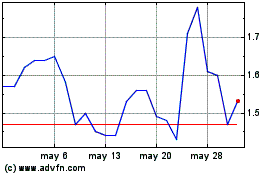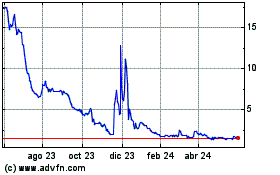- Altamira’s polyKRASmut siRNA shown to knock down at least
65-91% of KRAS mutations in colorectal, non-small cell lung, and
pancreatic cancer cell lines
- Fresh experimental data expected to strengthen Altamira’s
intellectual property around its AM-401 nanoparticles for the
treatment of KRAS-driven cancers
HAMILTON, BERMUDA, Jan. 24, 2024 -- Altamira
Therapeutics Ltd. (Nasdaq: CYTO) ("Altamira" or the
"Company"), a company providing nanoparticle-based technology for
efficient RNA delivery to extrahepatic targets, today announced
that it has filed a second provisional patent application with the
United States Patent and Trade Office (USPTO) to provide broad
coverage of different KRAS mutations in human cancer treatment with
nanoparticles comprising the Company’s OligoPhore™ platform and a
single siRNA sequence, polyKRASmut. The nanoparticles are developed
by Altamira as AM-401.
The second provisional application contains in
vitro data confirming the ability of polyKRASmut siRNA to knock
down a broad range of KRAS mutations in cancer cell lines. These
mutations include G12C, G12V, G12D, G12R, G12A, and A146T, which
account for 90.9% of KRAS mutations reported in pancreatic ductal
adenocarcinoma (PDAC), 65.3% in colorectal cancer (CRC) and 80.0%
in non-small cell lung cancer (NSCLC).1 In comparison, currently
approved small molecule inhibitors target just one KRAS mutation
(G12C), which represents 1.7%, 7.1% and 41.0% of total KRAS
mutations in PDAC, CRC and NSCLC, respectively. Since polyKRASmut
was tested against only a limited number of mutations, it may
potentially knock down other, yet untested mutations.
“We are very pleased to observe the latest data
on our polyKRASmut siRNA confirming its ability in knocking down
several KRAS mutations known to drive some of the most severe types
of cancer” commented Covadonga Pañeda, Ph.D., Altamira
Therapeutics’ Chief Operating Officer. “By combining the
polyKRASmut siRNA with our OligoPhore platform we can direct its
delivery to the tumor and tackle with one single compound many
different KRAS mutations. This combination aims to not only treat
cancers harboring different KRAS mutations but also addresses some
of the escape mechanism developed by these tumors that make them
less responsive to small molecule KRAS-directed therapies.
Additionally, we expect that AM-401 will be better tolerated than
small molecule-inhibitors as it specifically targets the
tumor-affected organ without affecting healthy tissues. We are
excited about advancing our AM-401 program to provide clinicians
and patients with a comprehensive treatment option for KRAS-driven
cancers.”
Altamira expects the second provisional patent
application to further strengthen its intellectual property around
the AM-401 program, under which the Company is aiming to develop a
treatment for KRAS-driven cancers. Previous in vitro and in vivo
work demonstrated efficient uptake of OligoPhore nanoparticles with
KRAS-targeted siRNA in CRC and PDAC cells, strong inhibition of
KRAS expression, reduced viability of tumor cells, and significant
reduction in tumor growth and volume.2 Importantly, a murine model
demonstrated the capacity of the OligoPhore platform to drive
targeted delivery of the nanoparticles specifically to tumor cells.
Altamira intends to file for an Investigational New Drug (IND)
application with the FDA in 2025 and to partner the program upon an
IND grant or following a phase 1 clinical trial.
The KRAS gene encodes one of the RAS proteins,
that control – like an “on / off switch” – cell growth, maturation,
migration, and death. Through mutations, the RAS proteins can be
rendered persistently active, causing cancer cells to proliferate
and spread in the body. Mutations of KRAS are associated with poor
prognosis in several cancers, and there is a substantial body of
evidence supporting the role of KRAS in the initiation and
maintenance of cancer. Mutated forms of KRAS are found in one-fifth
of all human cancers, including 32% of NSCLCs, 40% of CRCs and
85–90% of PDACs. According to the American Cancer Society, nearly
150,000 new cases of KRAS-mutated tumors are diagnosed annually in
the United States across these three tumor types alone. It is
estimated that KRAS mutations account for approximately one million
deaths per year worldwide.3
Although the role of KRAS mutations in cancer
has been known for decades, they have remained a challenging target
for therapeutic interventions. KRAS was long considered
undruggable, in part, because of the lack of obvious binding sites.
Only recently, the FDA approved the first two treatments for
KRAS-driven cancer: sotorasib and adagrasib, two small molecule
inhibitors of G12C-mutated KRAS for the treatment of NSCLC.
About Altamira Therapeutics
Altamira Therapeutics (Nasdaq: CYTO) is
developing and supplying peptide-based nanoparticle technologies
for efficient RNA delivery to extrahepatic tissues (OligoPhore™ /
SemaPhore™ platforms). The Company currently has two flagship siRNA
programs using its proprietary delivery technology: AM-401 for KRAS
driven cancer and AM-411 for rheumatoid arthritis, both in
preclinical development beyond in vivo proof of concept. The
versatile delivery platform is also suited for mRNA and other RNA
modalities and made available to pharma or biotech companies
through out-licensing. In addition, Altamira holds a 49% stake
(with additional economic rights) in its commercial-stage legacy
asset Bentrio®, an OTC nasal spray for allergic rhinitis. Further,
the Company is in the process of partnering / divesting its inner
ear legacy assets (AM-125 nasal spray for vertigo; post Phase 2;
Keyzilen® and Sonsuvi® for tinnitus and hearing loss; Phase 3).
Founded in 2003, Altamira is headquartered in Hamilton, Bermuda,
with its main operations in Basel, Switzerland. For more
information, visit: https://altamiratherapeutics.com
Forward-Looking Statements
This press release may contain statements that
constitute "forward-looking statements" within the meaning of
Section 27A of the Securities Act of 1933, as amended, and Section
21E of the Securities Exchange Act of 1934, as amended.
Forward-looking statements are statements other than historical
facts and may include statements that address future operating,
financial or business performance or Altamira’s strategies or
expectations. In some cases, you can identify these statements by
forward-looking words such as "may", "might", "will", "should",
"expects", "plans", "anticipates", "believes", "estimates",
"predicts", "projects", "potential", "outlook" or "continue", or
the negative of these terms or other comparable terminology.
Forward-looking statements are based on management's current
expectations and beliefs and involve significant risks and
uncertainties that could cause actual results, developments and
business decisions to differ materially from those contemplated by
these statements. These risks and uncertainties include, but are
not limited to, the success of strategic transactions, including
licensing or partnering, with respect to Altamira’s legacy assets,
Altamira’s need for and ability to raise substantial additional
funding to continue the development of its product candidates, the
clinical utility of Altamira’s product candidates, the
timing or likelihood of regulatory filings and approvals,
Altamira’s intellectual property position and Altamira’s
financial position, including the impact of any future
acquisitions, dispositions, partnerships, license transactions or
changes to Altamira’s capital structure, including
future securities offerings. These risks and uncertainties also
include, but are not limited to, those described under the caption
"Risk Factors" in Altamira’s Annual Report on Form 20-F
for the year ended December 31, 2022, and in Altamira’s other
filings with the Securities Exchange Commission (“SEC”), which are
available free of charge on the SEC’s website
at: www.sec.gov. Should one or more of these risks or
uncertainties materialize, or should underlying assumptions prove
incorrect, actual results may vary materially from those indicated.
All forward-looking statements and all subsequent written and oral
forward-looking statements attributable to Altamira or to persons
acting on behalf of Altamira are expressly qualified in their
entirety by reference to these risks and uncertainties. You should
not place undue reliance on forward-looking statements.
Forward-looking statements speak only as of the date they are made,
and Altamira does not undertake any obligation to update them in
light of new information, future developments or otherwise, except
as may be required under applicable law.
ContactInvestor Contact:
Hear@altamiratherapeutics.com 800-460-0183
1 Based on Huang et al. (2021), KRAS mutation: from undruggable
to druggable in cancer, Sig Transduct Target Ther 6: 386.
https://doi.org/10.1038/s41392-021-00780-4
2 Strand et al. (2019), Precision delivery of RAS-inhibiting
siRNA to KRAS driven cancer via peptide-based nanoparticles,
Oncotarget 10(46): 4761-75.
3 Simanshu et al. (2017), RAS proteins and their regulators in
human disease, Cell 170(1):17-33.
Contact
Investor Contact:
Hear@altamiratherapeutics.com
800-460-0183
Altamira Therapeutics (NASDAQ:CYTO)
Gráfica de Acción Histórica
De Dic 2024 a Ene 2025

Altamira Therapeutics (NASDAQ:CYTO)
Gráfica de Acción Histórica
De Ene 2024 a Ene 2025
